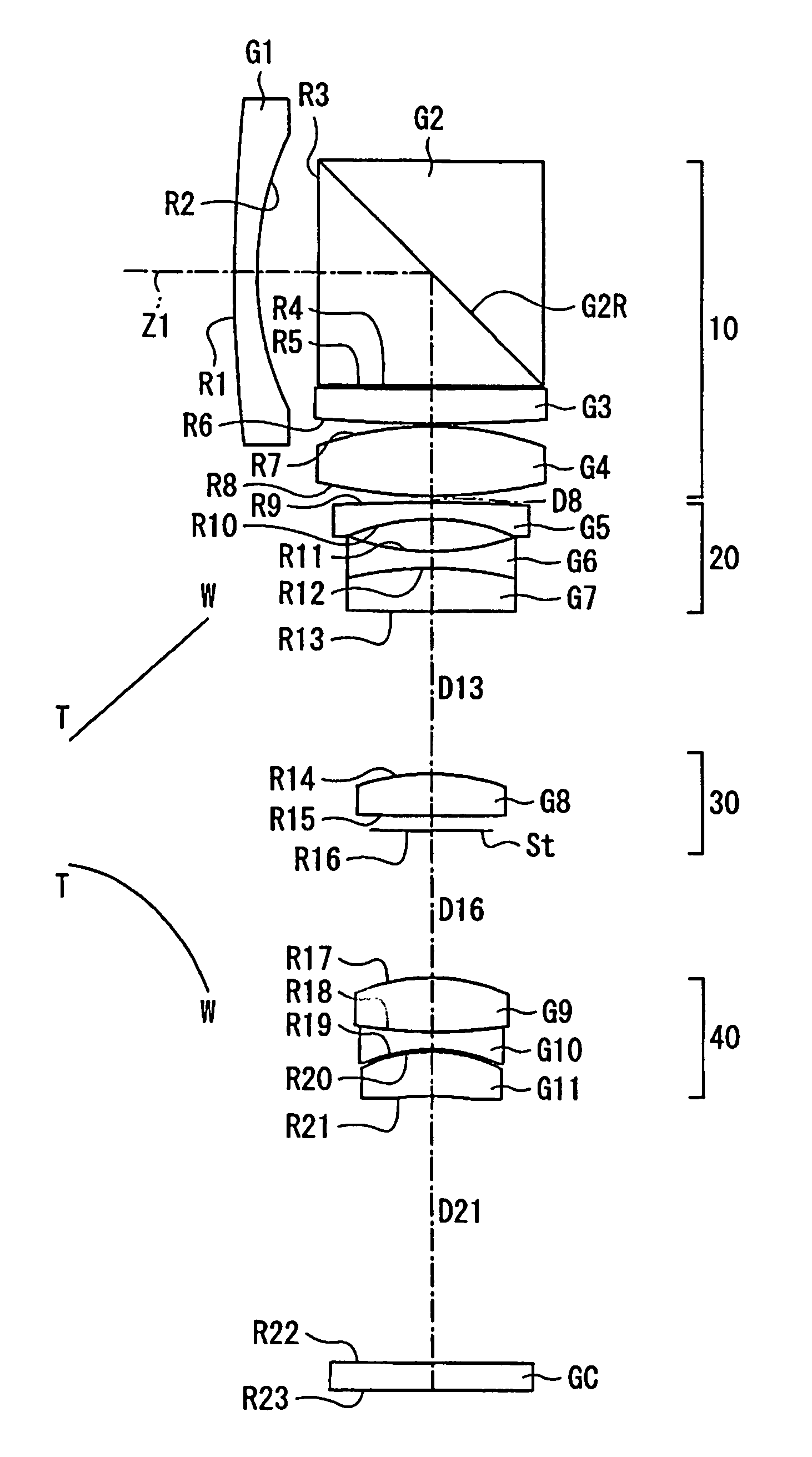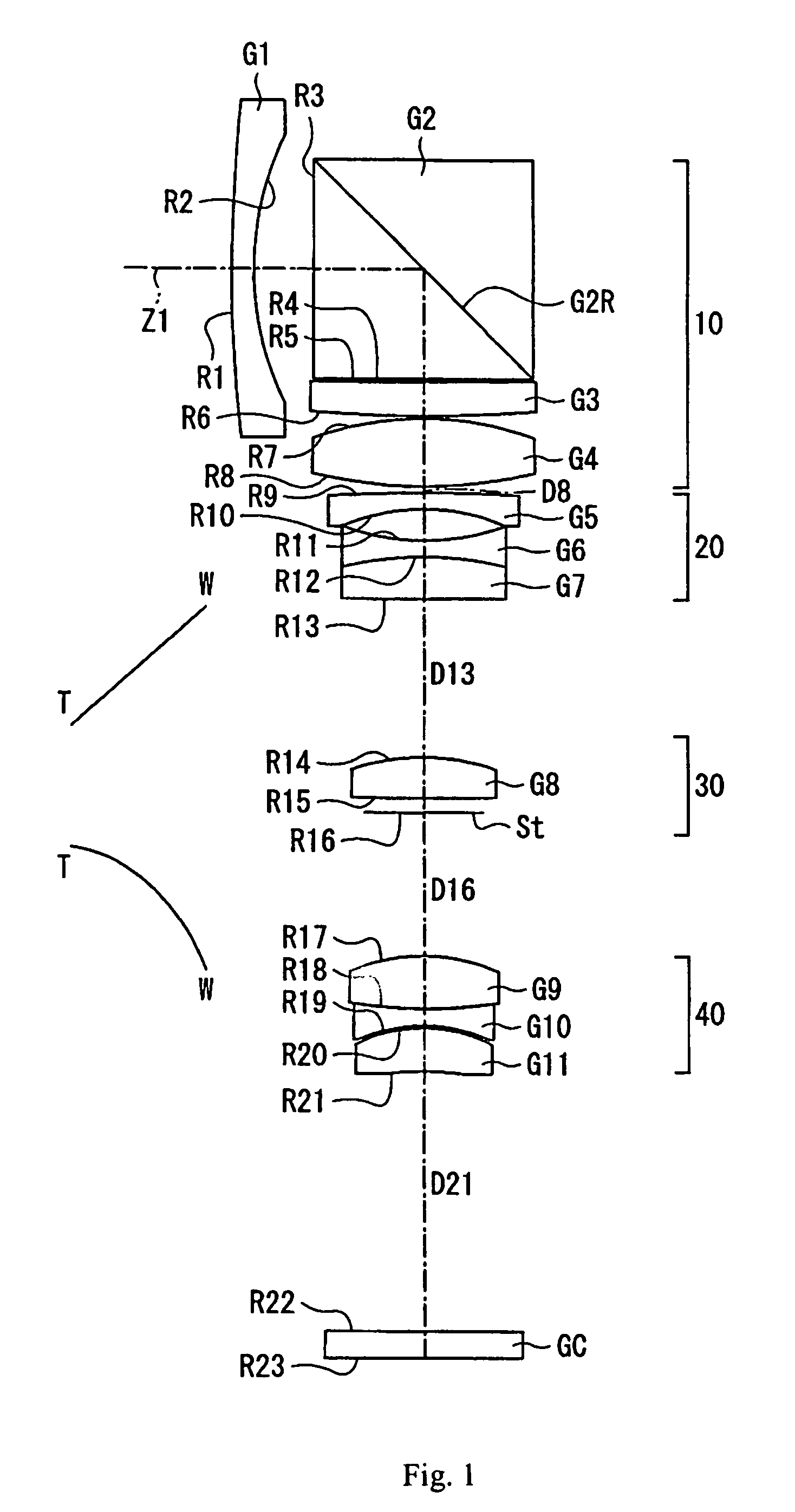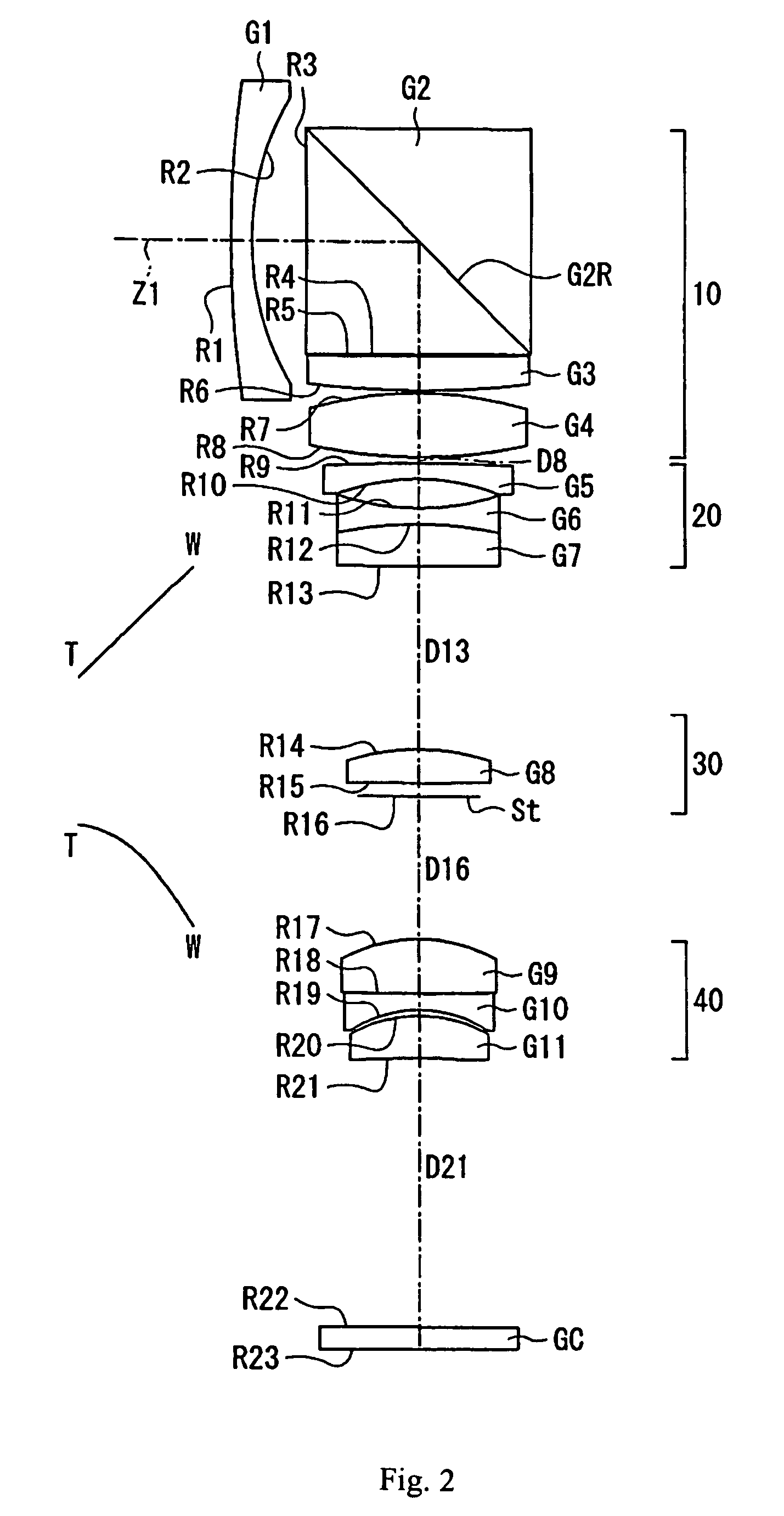Zoom lens including four lens groups
a zoom lens and lens group technology, applied in the field of zoom lenses, can solve the problems of difficult to shorten the overall length of the lens system and difficult to make the entire image pickup device thinner, and achieve the effect of thinning the image pickup devi
- Summary
- Abstract
- Description
- Claims
- Application Information
AI Technical Summary
Benefits of technology
Problems solved by technology
Method used
Image
Examples
embodiment 1
[0038]FIG. 1 shows a cross-sectional view of the zoom lens of Embodiment 1 at the wide-angle end. Table 1 below lists the group number (or GC, as appropriate), the surface number # in order from the object side, the radius of curvature R (in mm) of each surface on the optical axis, the on-axis surface spacing D (in mm) except that the on-axis surface spacings that vary with zooming are listed in Table 3 below, as well as the refractive index Nd and the Abbe number vd at the d-line (587.6 nm) of each optical element of Embodiment 1. Note that although R is the on-axis radius of curvature, for convenience of illustration, in FIG. 1 the lead lines from the R reference symbols extend to the surfaces being referenced but do not extend to the on-axis positions. Listed in the bottom portion of Table 1 are the focal length f (in mm) and the f-number FNO at the wide-angle and telephoto ends, and the maximum field angle 2ω at the wide-angle end and at the telephoto end for Embodiment 1.
[0039]...
embodiment 2
[0054]FIG. 2 shows a cross-sectional view of the zoom lens of Embodiment 2 at the wide-angle end. Embodiment 2 is similar to Embodiment 1 and therefore only the differences between Embodiment 2 and Embodiment 1 will be explained. Embodiment 2 differs from Embodiment 1 in its lens element configuration by having different radii of curvature of the lens surfaces, different aspheric coefficients of the aspheric lens surfaces, different optical element surface spacings, and some different refractive indexes and Abbe numbers.
[0055]Table 5 below lists the group number (or GC, as appropriate), the surface number # in order from the object side, the radius of curvature R (in mm) of each surface on the optical axis, the on-axis surface spacing D (in mm) except that the on-axis surface spacings that vary with zooming are listed in Table 7 below, as well as the refractive index Nd and the Abbe number vd at the d-line (587.6 nm) of each optical element for Embodiment 2. Note that although R is ...
PUM
 Login to View More
Login to View More Abstract
Description
Claims
Application Information
 Login to View More
Login to View More - R&D
- Intellectual Property
- Life Sciences
- Materials
- Tech Scout
- Unparalleled Data Quality
- Higher Quality Content
- 60% Fewer Hallucinations
Browse by: Latest US Patents, China's latest patents, Technical Efficacy Thesaurus, Application Domain, Technology Topic, Popular Technical Reports.
© 2025 PatSnap. All rights reserved.Legal|Privacy policy|Modern Slavery Act Transparency Statement|Sitemap|About US| Contact US: help@patsnap.com



